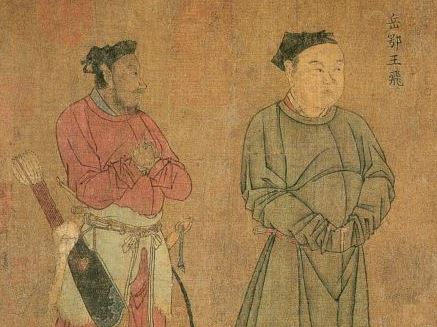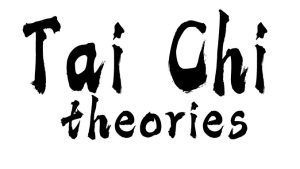The Nine Essentials (九要论)
The martial arts classic created by General Yue Fei during the Southern Song Dynasty in between 1103-1142.
“The Nine Essentials” is a martial arts classic that not only summarizes the general principles of martial arts from a theoretical perspective but also presents a comprehensive and eloquent system. It not only guides the practice of martial arts in general but also provides an avenue for artistic enjoyment. “The Nine Essentials” consists of nine sections that have a perfect internal numerical and logical structure. The content includes: One Unity, Two Qi, Three Joints, Four Extremities, Five Elements, Six Harmonies, Seven Advances, Eight Body Movent, and Nine Steps.
The First Principle
In all things, there is a unity amidst diversity, and in every division, there is a harmony. Therefore, in the vast expanse of the world, from all directions and corners, there exist various affiliations, countless intricacies, and interconnectedness. Indeed, one thing branches out into myriad forms, yet all these forms ultimately return to the same source. There are inherent necessities in all matters.
Moreover, the discourse on martial arts is also quite extensive. However, when it comes to the essentials, there are countless variations. Every situation involves both momentum and energy. Wherever there is momentum, there is energy. Though the momentum may differ, the energy converges into unity. What is referred to as “one” encompasses the entirety, from head to toe, with internal organs, muscles, skin, and facial features, all interlinked as a coherent whole. It can be broken but not scattered, collided with but not dispersed. When the upper body moves, the lower body naturally follows; when the lower body moves, the upper body leads it. When the upper and lower body move, the middle section attacks; when the middle section moves, it harmonizes the upper and lower body. The internal and external are connected, the front and back complement each other. This is what is meant by “unity.” However, unity cannot be forced but is achieved through spontaneous action. In that moment, be still and tranquil, serene and profound, residing in one’s place, as stable as a mountain.
In that moment, be dynamic, like thunder and collapsing, emerging with swift speed like lightning. Moreover, in stillness, there is absolute stillness, with no distinction between surface and interior, upper and lower, and no hint of disparity or entanglement. In motion, there is complete motion, with no pulling or shifting in any direction. It is truly like water flowing downward, unstoppable and overwhelming, or like fire inwardly attacking, erupting without warning. It requires no deliberate thinking, no cumbersome deliberation. It naturally happens, beyond one’s expectations, without any external influence. Could it be that there is a self-originating source?
Indeed, Qi accumulates daily and brings benefits, and skills are cultivated over time to attain perfection. Observing the transmission of the Saintly Gate’s consistent teachings, one must first acquire extensive knowledge and strong understanding, reach a sudden realization without abandoning the study of principles, and comprehend that there are no difficulties or easiness in matters. The key lies in the diligent pursuit of self-improvement, not rushing or competing impatiently. Step by step, follow the sequence, and then the body and limbs will naturally connect, seamlessly bridging the internal and external, the surface and interior, without difficulty. Thus, the scattered elements are unified, and the divided elements are brought together, as the entire body and all the joints ultimately return to a single energy.
The Second Principle
There have been discussions on the art of striking, which also encompass discussions on Qi. Qi is the essence of unity, yet it can be divided into two aspects, known as breathing. Breathing is the embodiment of Yin and Yang. Striking cannot exist without movement and stillness, and Qi cannot exist without breathing. Inhalation represents Yin, while exhalation represents Yang. Yin pertains to tranquility, while Yang pertains to movement. Rising is Yang, descending is Yin. When Yang Qi ascends, it becomes Yang; when Yang Qi descends, it becomes Yin. When Yin Qi descends, it remains Yin; when Yin Qi ascends, it becomes Yang. This is the division of Yin and Yang.
What is meant by clarity and turbidity? Ascending is clarity, descending is turbidity. Clear Qi rises, turbid Qi descends. Clearness is Yang, turbidity is Yin. The essence lies in nourishing Yin with Yang. Speaking in general terms, it is referred to as Qi, and speaking in specific terms, it is referred to as Yin and Yang. Qi cannot exist without Yin and Yang, just as a person cannot exist without movement and stillness, the nose cannot exist without breathing, and the mouth cannot exist without inhalation and exhalation. This is the principle of treating the cyclical nature with caution. However, while Qi is divided into two, it ultimately exists as one. Those who aspire to follow this path should be careful not to become overly fixated on these divisions.
The Third Principle
Qi resides within the body, but the joints of the body have no fixed location. The three joints refer to the upper, middle, and lower parts. Speaking in terms of the body: the head is the upper joint, the torso is the middle joint, and the legs are the lower joint. Speaking of the upper joint: the celestial palace is the upper joint, the nose is the middle joint, and the sea bottom is the lower joint. Speaking of the middle joint: the chest is the upper joint, the abdomen is the middle joint, and the dantian is the lower joint. Speaking of the lower joint: the feet are the terminal joint, the knees are the middle joint, and the hips are the root joint. Speaking of the upper limbs: the hands are the terminal joint, the elbows are the middle joint, and the shoulders are the root joint.
Speaking of the hands: the fingers are the terminal joint, the palm is the middle joint, and the palm root is the root joint. By observing this, there is no need to discuss the feet separately. However, from head to toe, each part has its three joints. Without the division of the three joints, there would be no focal points. For without clarity in the upper joint, there would be no support or foundation. Without clarity in the middle joint, the entire body would be empty. Without clarity in the lower joint, one would stumble and fall on their own. How can we neglect these aspects? As for the initiation and movement of Qi, it is the terminal joints that move, the middle joints follow, and the root joints impel. However, this is still speaking of division in terms of each joint. In truth, from the top of the head to the soles of the feet, the entirety of the body’s four limbs and hundred bones constitutes one joint. What significance do the three joints hold? And why speak of three joints within each of the three joints?
The Fourth Principle
Let us now move beyond discussing the body and Qi and delve into the topic of terminal points. The terminals refer to the residual aspects of the body. When speaking of the body, these aspects are initially overlooked, and when discussing Qi, they are seldom mentioned. However, just as striking internally generates an external effect, and Qi travels from the body to reach the terminals, the utilization of Qi does not solely reside within the body. If it did, it would be empty and lacking substance. If it did not manifest in the terminals, it would be substantial yet still empty. Therefore, the discussion of terminals is also indispensable. However, this discussion pertains only to the terminals of the body and has yet to encompass the terminals of Qi.
What are these four terminals? Let us begin with the first: hair.
Hair, seemingly unrelated to the five elements and irrelevant to the four limbs, might appear unworthy of discussion. However, hair serves as the terminal of blood, and blood serves as the guide for Qi. Even if we do not directly address Qi through the perspective of hair, Qi cannot exist without being nourished by blood. If we neglect hair, we cannot adequately cultivate Qi. Thus, when the hair stands on end, the blood terminals are sufficient.
As for the other terminals, the tip of the tongue represents the terminal of flesh, and flesh serves as the container of Qi. Without forming terminals within the flesh, there would be insufficient capacity to hold Qi. Therefore, the tongue must strive to touch the teeth to satisfy the terminals of flesh.
Regarding the terminals of bones, they are the teeth. And the terminals of tendons are the fingernails. Qi originates from the bones and is connected to the tendons. Without addressing the teeth, we have yet to reach the terminals of tendons. To adequately satisfy these terminals, one must strive to break teeth with tendons and penetrate bones with nails. If one can truly achieve this, then the four terminals are fulfilled. With the fulfillment of the four terminals, Qi itself becomes complete. There is no longer emptiness without substance or substance that remains empty.



